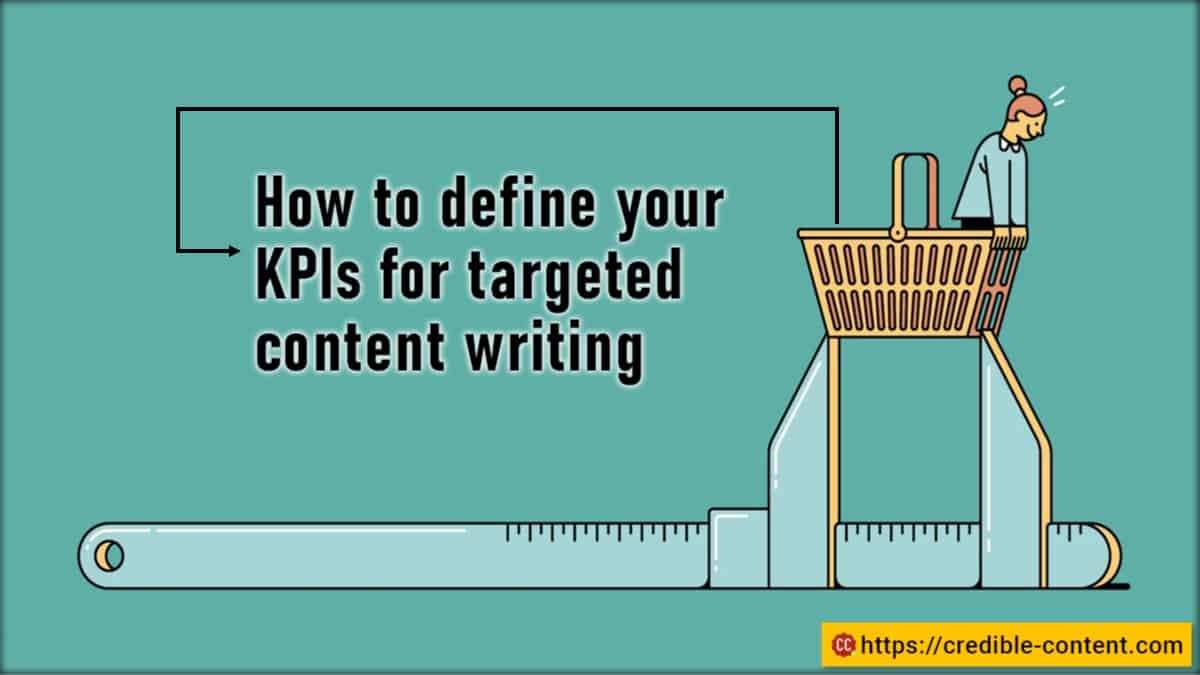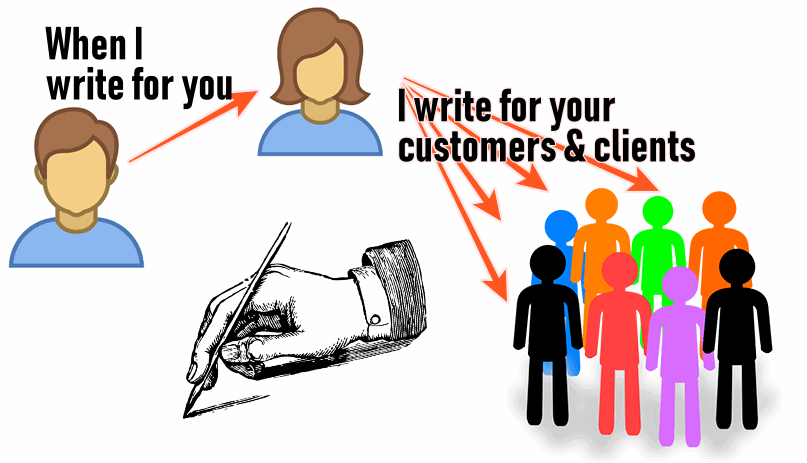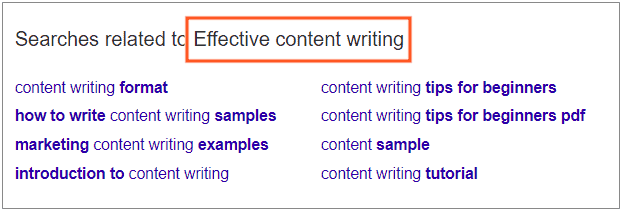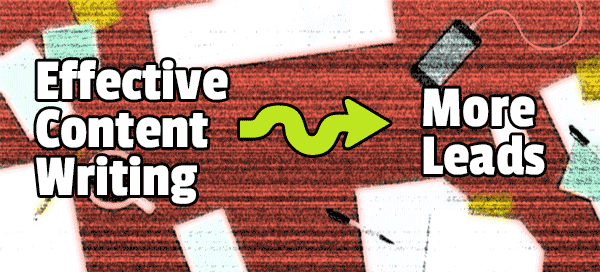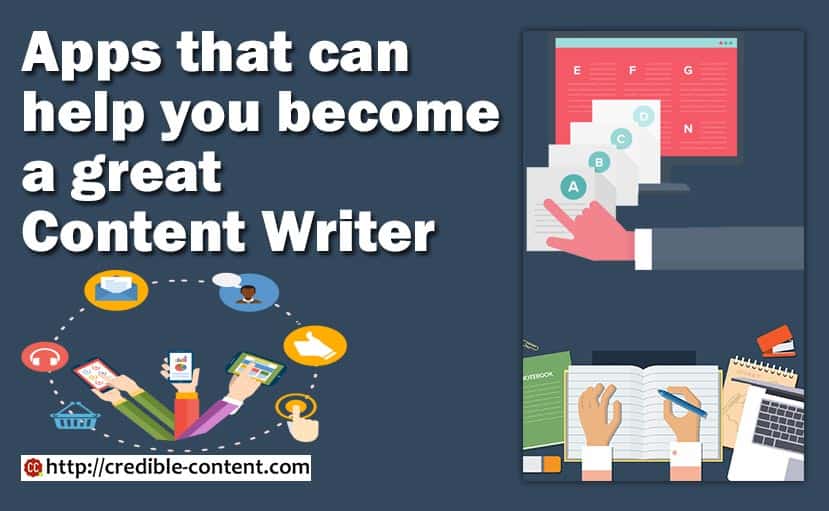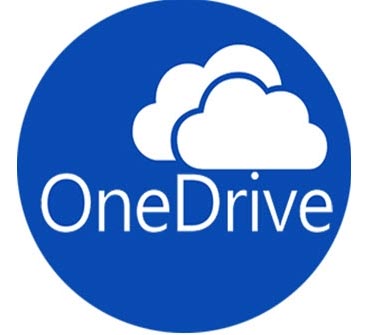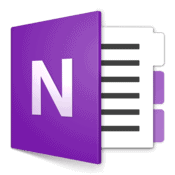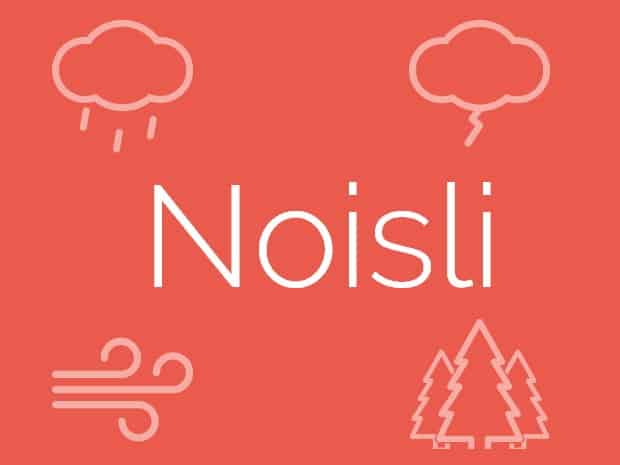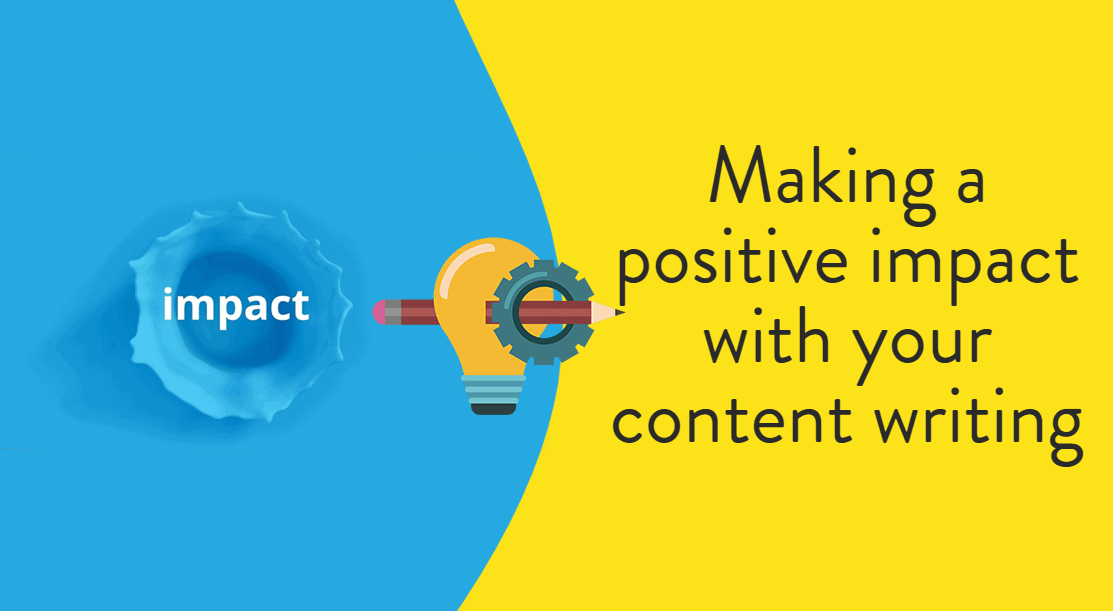
Making a positive impact with your content writing
Every piece of content writing that you publish on your website or blog (or elsewhere) needs to make a positive impact.
Of course, whenever people think of publishing content their primary concern is improving their search engine rankings. Nothing wrong in that, but that shouldn’t be the only concern.
Remember that ultimately, people need to decide whether they want to do business with you are not.
How do they decide that?
When you can convince them.
To convince them, you need to make an impact.
Just because they are on your website doesn’t mean they’re going to buy from you. You have to address their concerns. You have to give them the right information.
When they read the information on your website, they should think, “Yes, these are the guys I want to work with, or buy from.”
The short-term approach is, you throw mud at the wall hoping that some of it will stick, and some of it does.
So, you indiscriminately publish content that gets you search engine traffic and then you hope some of the traffic will convert. Some of it converts. The majority of it doesn’t.
The long-term approach, which is more sustainable and more profitable, is to build an audience.
You build an audience when you make an emotional connection. People want to then come to your website regularly. They want to read or view what you publish. They want to share your content. They even want to save your content. They become loyal to your brand. When they need to buy what you sell, they buy it from you.
This is how you make a positive impact.
But how do you make this positive impact so that people become your regular readers, and begin to trust you, and begin to pay attention to what you have to say?
You can do these 14 things:
1. Always keep the interest of your readers in mind
Nobody wants to read your personal journal, unless they derive something out of it (inspiration, or some insight, or an example). People want to read something useful. Something that can help them. Something that can make their life better than it was before they started reading your blog post or article.
If you want to make a positive impact with your content writing, always write what interests your readers. Try to find what they want to know, and then tell them. This will keep them coming back to your website or blog.
2. Craft the title of your web page or blog post with care
This is a technical aspect of writing and publishing impactful content. Title is something that draws people to your link.
When they come across your web page or blog post title on search engines or on their social media timelines, they should immediately be able to know what you are offering. This means, your title should never be ambiguous.
For example, the title of this blog post tells you 14 ways to make a positive impact with your content writing. So, if you’ve been looking for something like this, you want to check it out immediately.
People have different opinions on how long your title should be, but it depends on exactly what you are trying to say. Two things are important when you are creating a title for your blog post or web page:
- For SEO purpose, your title must be 50-65 characters, including spaces. This is because these are the number of characters (maximum 70) that Google shows when it shows your listing on search result pages and the rest it truncates.
- People should be able to understand your title within a single glance. If they need to make an effort to make sense of your title, they’re going to get distracted and they may not read the rest of your blog post or web page.
3. Make your writing mobile friendly
Write shorter sentences. Divide complex sentences into smaller, multiple sentences.
It makes it easier to read and grasp on mobile screens.
The same holds for paragraphs. Write short paragraphs. Not more than two sentences per paragraph.
Again, this is less about the quality of your content writing and more about paying attention to technicalities, but you cannot hope to make a positive impact if people find it difficult to read your content and consequently, leave without reading it.
4. Organize text under headings
Headings make your writing scannable. One can understand the gist of your web page or blog post by simply running through the headings.
Headings are also good for SEO. Use your long tail keywords when writing your headings.
5. Write for people who have a shorter attention span
Don’t take it negatively. Life these days is full of distractions. As I’ve written above, lots of people access your content on their mobile phones.
While reading your content, they will get constant notifications. They might be traveling. They might be in the midst of a conversation. They might be waiting for their doctor’s appointment.
The thing is, the amount of attention is limited these days whether people read your content on their computers and laptops, or on their mobile devices.
Make this assumption when you are writing content.
You don’t have to lower your writing quality. There is no need to dumbify your text.
As mentioned above, use simpler sentences. Use direct language. Stick to the point.
6. Convey your important point as soon as possible
Since the attention span is limited these days, there is no use beating around the bush. You don’t need to build up a narrative unless you are creating an interesting story.
By the time people are through with your first paragraph, they should know what you’re trying to communicate through your content writing and what they are going to achieve after they have read your blog post or article.
In terms of a business website, suppose you want to sell an e-book. As soon as people come to your website, people should know what information is contained in the e-book and you are selling it, and not offering it for free. These points must be made clear in the beginning preferably, in the first sentence itself.
7. Do keyword research to use the right language
When I say keyword research I don’t mean you need to stuff your writing with your keywords to improve your SEO.
Yes, you need to use your keywords strategically, but if you know the right keywords to focus on, it improves your language and the way you convey what you need to convey.
8. Back up your claim with data from credible sources
Data is very reassuring. If you tell someone that 72% B2C content marketers attribute their marketing success to the quality of their content, your readers will find it easier to believe you if you let them know that you have taken this statistic from Content Marketing Institute.
If you mention in your blog post that by 2021 content marketing will be a $400 billion industry it’s better to let your readers know that you are getting this number from Forbes.
9. Don’t underestimate the visual aspect of writing content for business marketing
Just because I am writing about content writing, it doesn’t mean we should overlook the importance of incorporating visuals into your overall message. Visuals are highly effective.
Visuals not only help you present your ideas attractively (if you are using graphs and pie charts), they also provide a brief relief to people. When they are reading text, and suddenly they come across a visual, it distracts them for a few seconds and they need to refocus. This helps them focus better.
Make sure that the images and graphics that you use are relevant to your current topic.
10. Write in a conversational style
This may sound like a clichéd (oft repeated) piece of advice, but it is very easy to end up ignoring it when you are in the thick of your creative things.
Write the way you talk.
It doesn’t mean if you talk in monosyllables you also write in monosyllables, but make your writing conversational. Whenever possible, use first person.
When you’re writing for a business, especially when you are writing for your business blog, try to use “you” and “I” instead of “you” and “we” unless there is reason to use “we”.
A good thing about writing in a conversational style is that you will avoid using big sentences and bigger paragraphs. Usually when we talk, we use precise sentences. Also, we don’t use complicated words when we talk.
This makes your writing easier to read and instills in it an easy flow.
11. Empathize with your readers when writing content
Convey it to your readers that you can understand or you can relate to what problems and issues they are going through.
Suppose you’re writing a blog post about an SEO tool you have just developed.
Talk about the problems people may have faced while using other SEO tools. Tell them that you understand the importance of improving their SEO and how their business depends on better search engine rankings. Concur with them that they face tough competition and they need a convincing tool to improve their SEO.
12. Know your readers properly
It is also called defining an ideal persona. This will tell you whom you are writing your content for.
13. Clearly define the propose of your current blog post or article
Of course the long term propose is that you want to engage, and then consequently, build a loyal following of readers/visitors who repeatedly visit your website or blog and takes your word seriously.
The short term propose could be a mix of
- Educating your readers about a particular topic concerning your business.
- Publishing content people would like to share.
- Increase information wealth of your website or blog.
- Getting more subscribers for your newsletter.
- Improving your search engine rankings for a particular search term.
14. Use real-world examples
Want to show how your SEO tool actually helps entrepreneurs improve their search engine rankings?
Talk about a real-world example. Tell about a real business. Capture screenshots of current rankings of that business and publish them. If possible, mention the link of the website. Try to get a quote from the owner, or the person who used your SEO tool to improve the SEO of the website.
Why it is important to make a positive impact with your content writing?
Sustainable business is all about building relationships. It is not about tricking people into coming to your website and then leaving it up to them whether they want to do business with you or not.
It is very easy to trick people into coming to your website. If you can remember, they used to have banner ads with a monkey running left and right and you were asked to click the moving monkey with precision, making you believe that it was some sort of game. All it did was, take you to the advertiser’s website. On the website, something totally unrelated was being sold and whatever was being sold had nothing to do with a moving monkey or not even with a game.
Although these days most of the businesses don’t go to that extreme, still, one way or the other, they’re playing the monkey trick on the visitors by tricking them into visiting the website.
It’s all about numbers. If you have lots of money to publish tons of junk content just to draw traffic from search engines and social media websites, some of the traffic may convert. If one visitor converts out of every 1000 visitors, then maybe bringing 1,000,000 visitors to your website can get you 1000 customers. This is the logic used by spammers.
Can you really get 1,000,000 visitors to your website? On an ongoing basis?
On the other hand, if you publish impactful content, out of those 1000 visitors, maybe 50 or 100 people will convert, or even more. This is a much better conversion rate. Also, more sustainable and repeatedly doable.
This is because when people find quality content on your website they trust you.
Writing that is meant to make a positive impact also draws targeted, focused traffic to your website or blog. For example, people who come to my website or my blog either need a content writer or they want to read about content writing.
Although video marketing is also content marketing, since I’m a writer and I don’t provide video marketing services (at least not a dedicated service), I don’t aim to draw traffic for this keyword (or any other that does not involve content writing vis-à-vis content marketing). This saves me lots of effort, lots of time, it also improves my conversion rate. People know what they are getting when they come to my website or blog.
So, to make an impact with your content writing, focus on your core topics, focus on the needs of your readers, and even if you publish fewer blog posts and articles, only publish relevant, meaningful and useful content.

